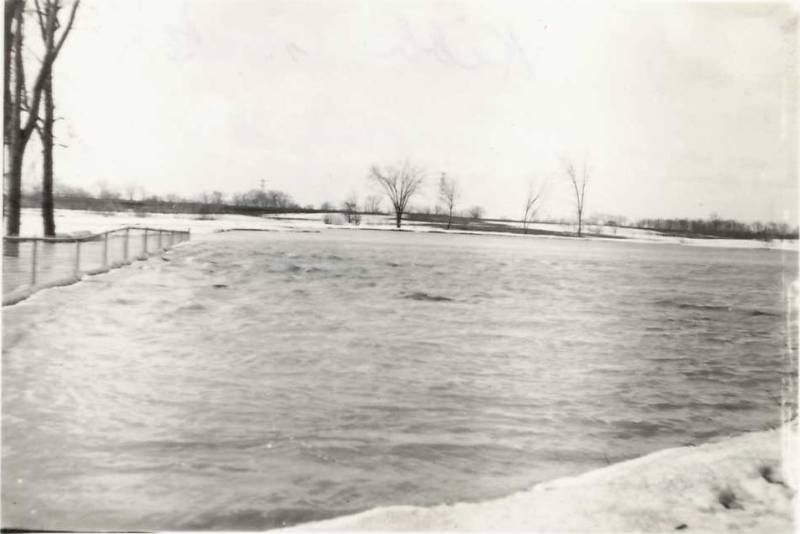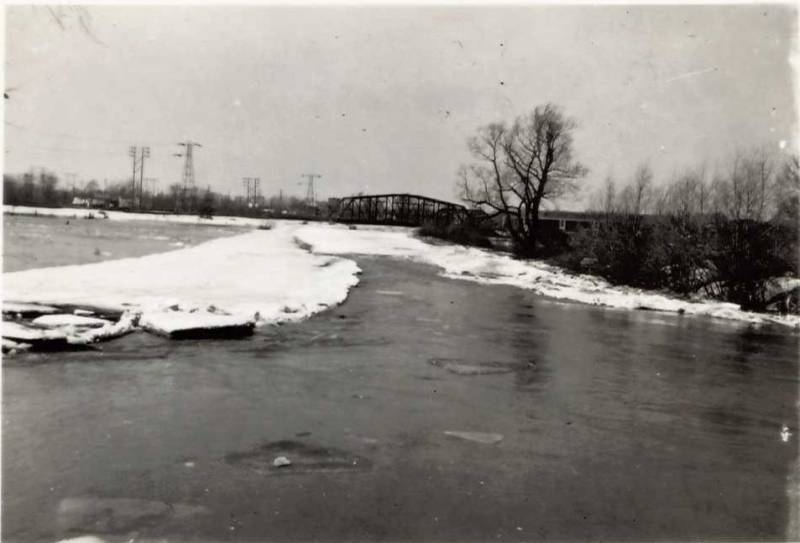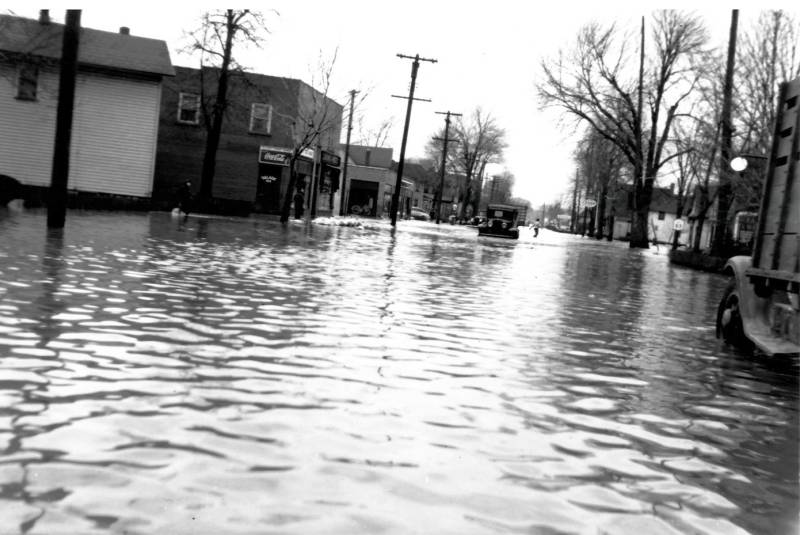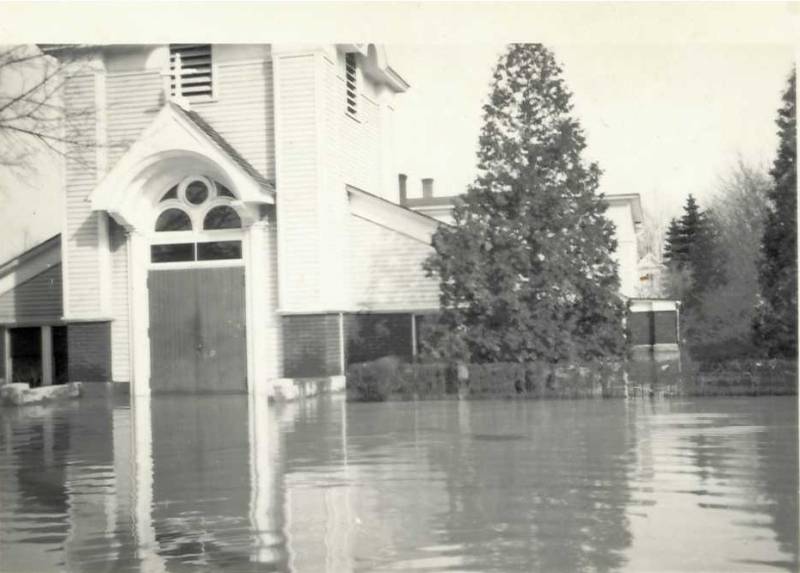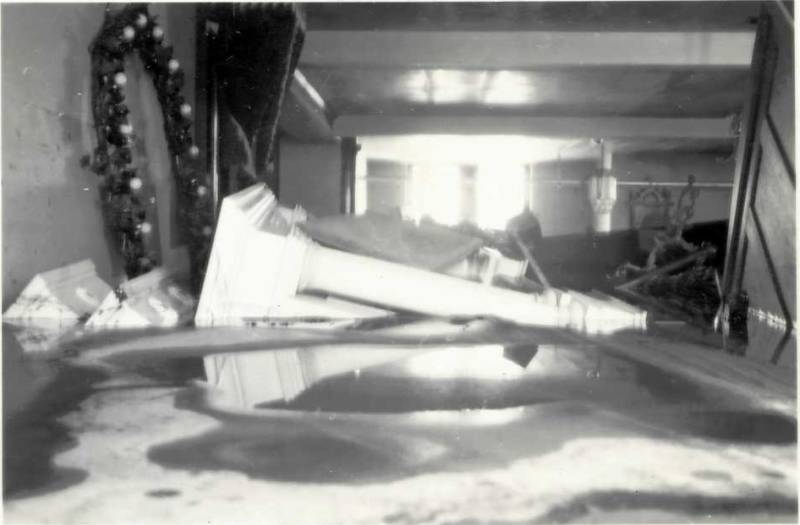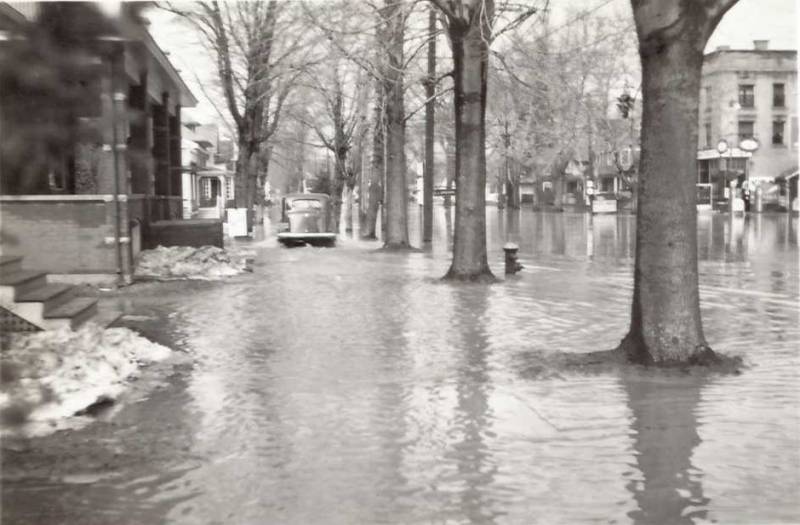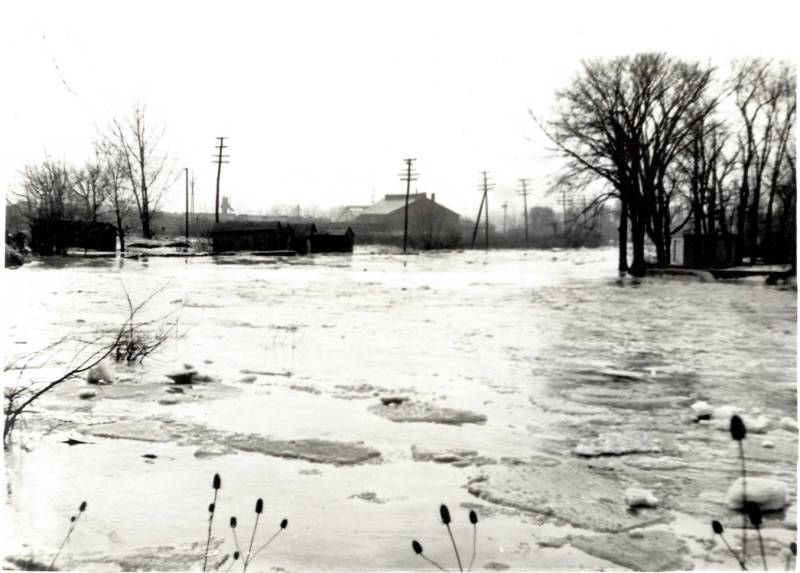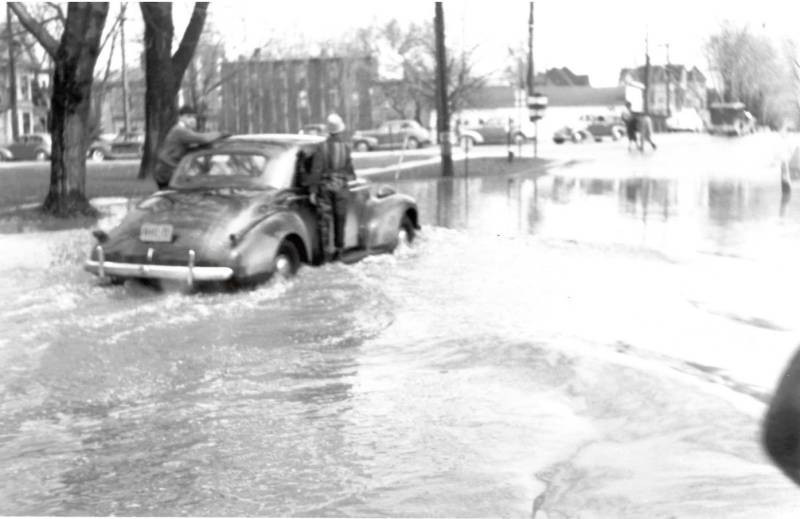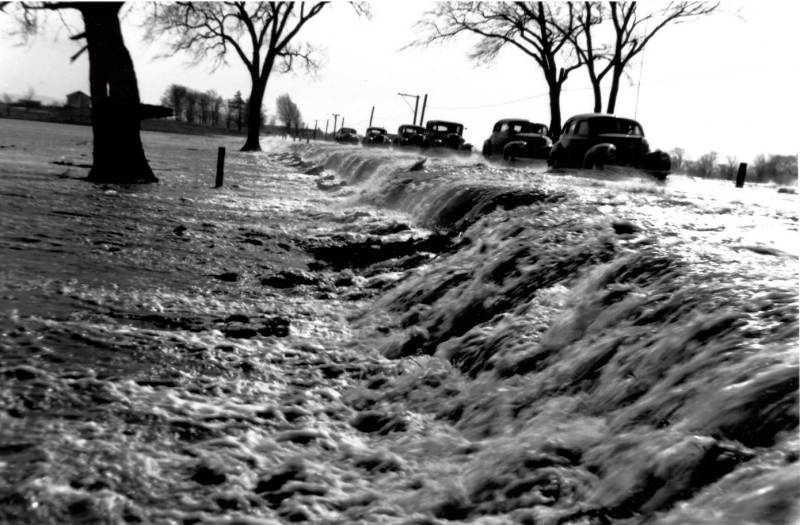
Anyone who has lived in our area for any length of time, especially along the Tonawanda Creek, knows that the waters can be unpredictable at times. We only have to look back just a few weeks for another example. There have been many instances when its flow has overreached the banks of the creek and invaded the surrounding properties. The most extensive of these floods in Batavia occurred 80 years ago during a spring thaw.
Batavia has seen many high flood waters in its history. In 1887, there was a flood called at the time “the greatest flood Batavia has seen in years,” and in 1902 the waters damaged the Walnut Street bridge, in what was called a “record breaker,” and even the flood of 1959 caused considerable hardship.
However, in March 1942 it would see its greatest flood in its history. That March there was still a good deal of snow on the ground of the city. In typical Western New York fashion, a large snowstorm came through on March 15, added to the white coverage. Yet, on the following day, the temperatures rose quickly and the snow changed to rain.
The precipitation caused much of the snow drifts to begin to melt, especially in the hills near Attica and along the tributaries of the Tonawanda. The creek soon flooded as water poured in Alexander and filled the low areas that bordered the creek. One particular area that was hit hard was the streets south of Ellicott Street in Batavia.
Water-filled streets like Jackson, Swan, Hutchins, and Otis. As the water flowed under the Walnut Street bridge, then still open to vehicular traffic, it spread to West Main Street and to the northern side streets.
Many of the residents of those streets were forced to evacuate their homes as the waters continued to rise, and many sought out friends or relatives living in higher points in the city.
The Red Cross stepped in to assist and helped 225 families find safe and dry lodgings. Those without another place to go were given shelter at the YMCA and school buildings that were unaffected. The only effective means of travel along many of the streets of Batavia, looking more like the canals of Venice, Italy, were boats and canoes and other forms of watercraft.
Most homes had cellars full of water, and in some worse cases, the waters reached the first floors. The people living in the flooded areas could not return home for several days, but when they did return they were met with severe damage to their homes and properties.
In the end, the Tonawanda Creek crested at 14 ½ feet, the highest in history. In total, nearly $500,000 in damage was caused.
The 1942 flood, among others, caused the city to strongly look towards how to better manage the waters of the Tonawanda to prevent a similar deluge. Flood control improvements were authorized in 1948 within the Flood Control Act passed by Congress.
The improvements were completed by late 1955. Some of the improvements included: widening the creek to upwards of 100 feet, adding a retaining wall, clearing the channel, extra bank protection in suspectable areas, and improvement of existing drainage systems.
